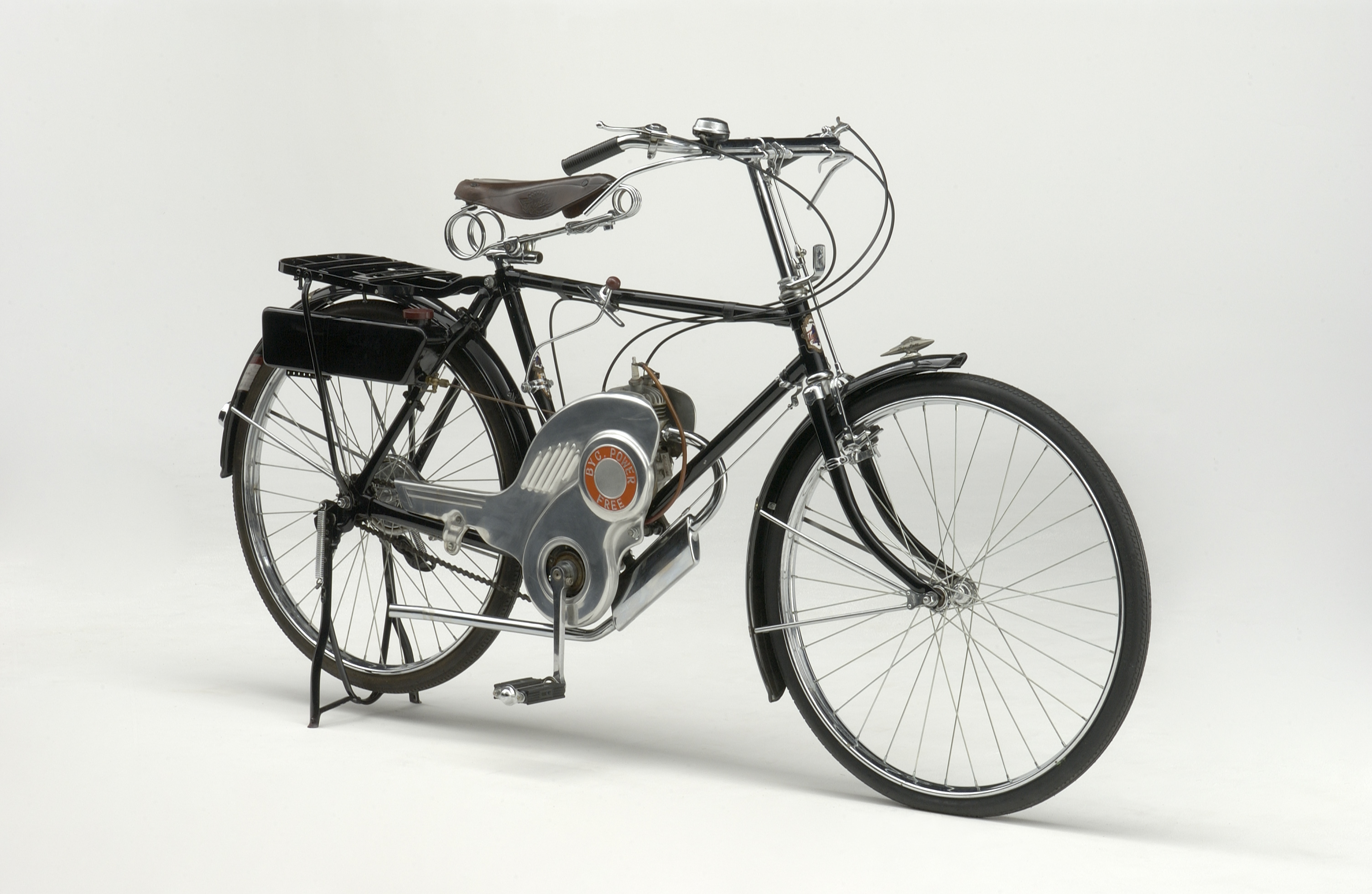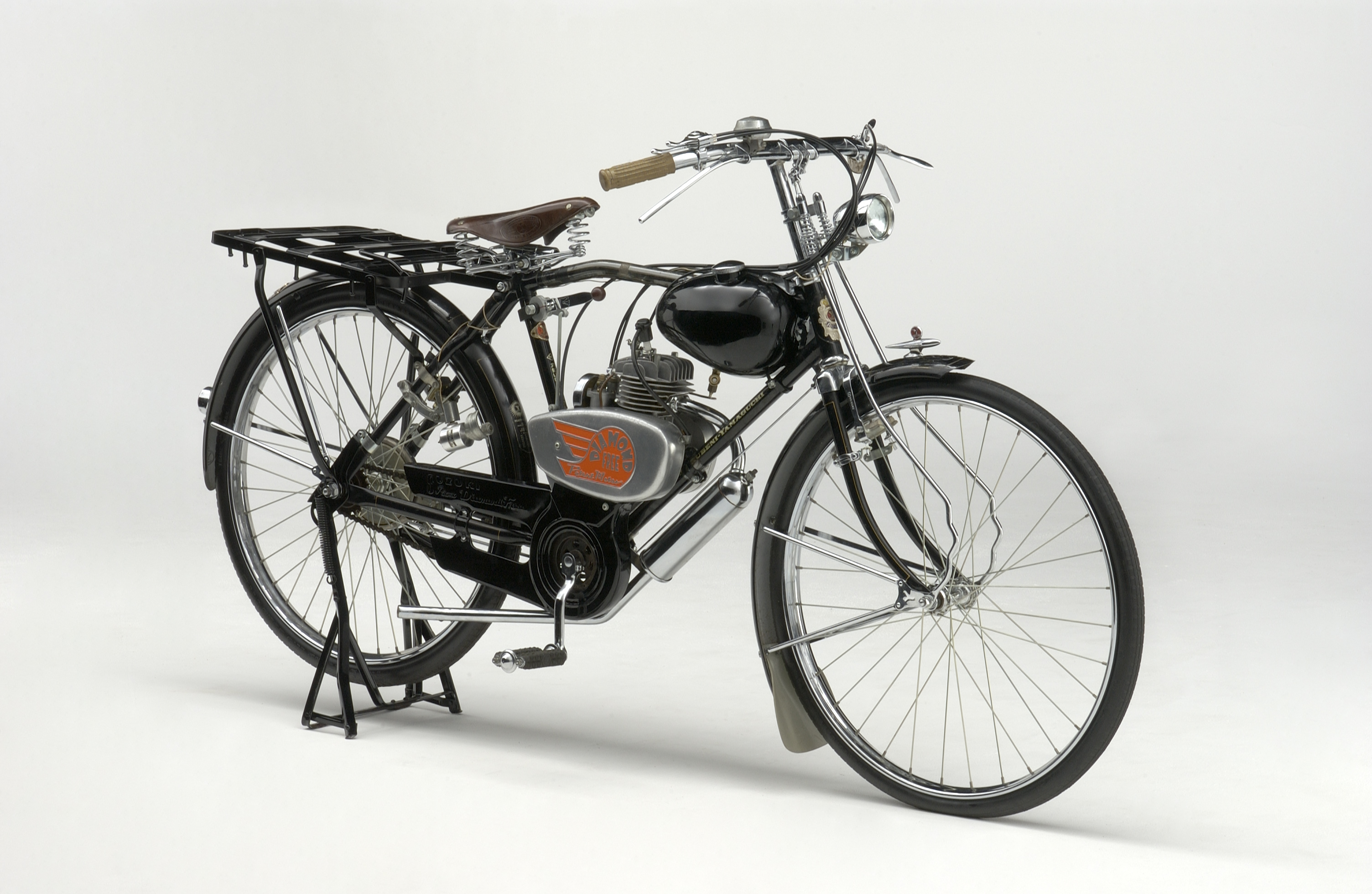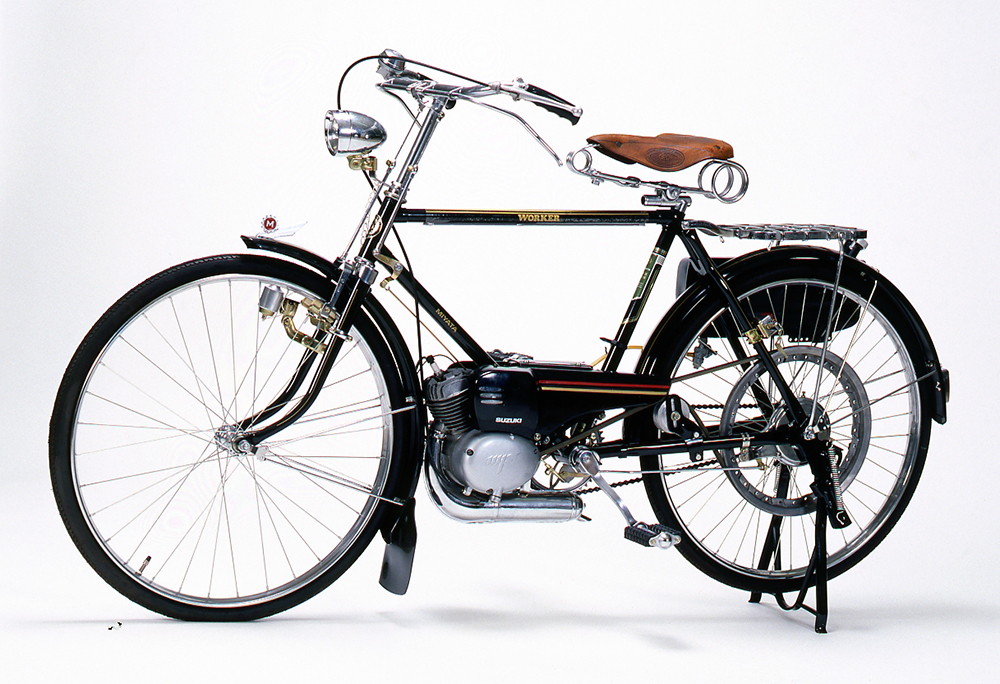1952 | Power Free
The origin model of Suzuki as a motorcycle manufacturer featuring the company’s first auxiliary bicycle engine

Suzuki designed auxiliary bicycle engines based on a theory that a displacement of 36 cm³ would be sufficient to generate enough power for riding. Reflecting this approach, the Power Free is equipped with a 36 cm³ 2-stroke air-cooled 1-cylinder engine that generates brake horsepower of 1 PS. In addition to Suzuki’s unique double sprocket wheels, the engine was paired with a wet-type multiple-disc clutch and a 2-speed transmission. Two patents for the engine, including patent No.180512 for the engine system, were obtained in Japan. In a notable episode during development, the Power Free demonstrated its superb performance by conquering the Hakone Pass in hill climbing tests easily and without incident. The success of this engine formed the foundation of Suzuki’s subsequent growth. The ES, an updated version of the Power Free, debuted in 1954.
| Dimensions and weight | Dimensions | Overall length | - |
| Overall width | - | ||
| Overall height | - | ||
| Wheelbase | - | ||
| Weight | 6.0 kg(Engine weight) | ||
| Engine | Engine type | 2-stroke, 1-cylinder, air-cooled | |
| Engine displacement | 36 cm³ | ||
| Bore x stroke | 36.0 mm × 36.0 mm | ||
| Maximum power | 0.7kW(1PS) / 4,000rpm | ||
| Maximum torque | |||
| Transmission | 2-speed constant mesh | ||
| Front tire size | - | ||
| Rear tire size | - | ||
1953 | Diamond Free
Powered by an auxiliary bicycle engine with displacement increased to 60 cm³

The Diamond Free was developed in response to the revision of the Japanese Road Traffic Act in July 1952, which increased the permitted displacement for 2-stroke motorized bicycles to 60 cm³. The resulting 60 cm³ air-cooled 1-cylinder engine was designed under basically the same concept as the previous 36 cm³ engine. The performance of the Diamond Free was widely recognized, reflecting the victory of Suzuki employee Rinsaku Yamashita in the cycle motor category of the first Mount Fuji Hill Climb Race in 1953 and its successful completion of the 3,000-kilometer Sapporo-to-Hokkaido Japan North-South Performance Test. These results led to a surge in popularity, with sales reaching 6,000 units per month.
| Dimensions and weight | Dimensions | Overall length | - |
| Overall width | - | ||
| Overall height | - | ||
| Wheelbase | - | ||
| Weight | 9.3 kg(Engine weight) | ||
| Engine | Engine type | 2-stroke, 1-cylinder, air-cooled | |
| Engine displacement | 58 cm³ | ||
| Bore x stroke | 43.0 mm × 40.0 mm | ||
| Maximum power | 1.5kW(2PS) / 4,000rpm | ||
| Maximum torque | 4.2N-m | ||
| Transmission | 2-speed constant mesh | ||
| Front tire size | - | ||
| Rear tire size | - | ||
1954 | Mini Free
Model change of the Power Free with around twice the horsepower

The Mini Free is a model change of the Power Free. Its 50 cm³ air-cooled 2-stroke engine generates maximum horsepower of 2 PS with fuel economy of 70 km/L* and a top speed of 45 km/h. As one notable feature, the rider can switch between pedal- and engine-driven mode simply by operating the clutch lever. With the engine located low down at the center of the model to create an extremely stable center of gravity, the Mini Free was well received for its excellent maneuverability. It was sold at a uniform price of 23,000 yen across the whole country.
* Suzuki’s internal test results. Figures may vary depending on the rider’s skill or riding conditions.
| Dimensions and weight | 寸法(mm) | 全長(mm) | - |
| 全幅(mm) | - | ||
| 全高(mm) | - | ||
| Wheelbase | - | ||
| Weight | 6.0 kg(Engine weight) | ||
| Engine | Engine type | 2-stroke, 1-cylinder, air-cooled | |
| Engine displacement | 50 cm³ | ||
| Bore x stroke | 38.0 mm × 44.0 mm | ||
| Maximum power | 1.3kW(1.8PS) / 4,500rpm | ||
| Maximum torque | |||
| Transmission | |||
| Front tire size | - | ||
| Rear tire size | - | ||
